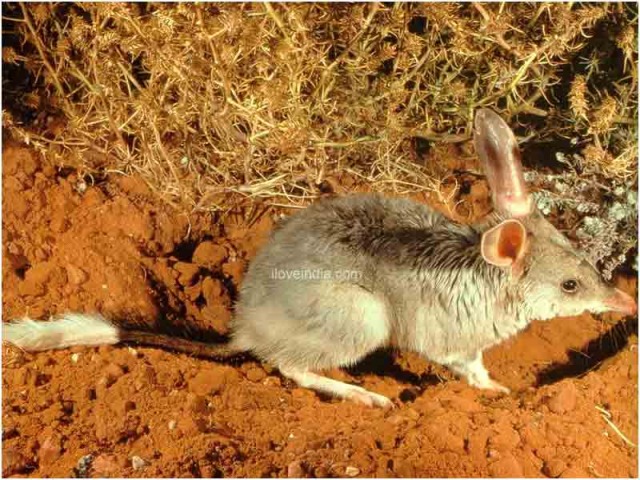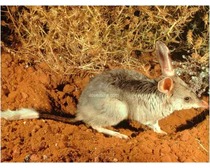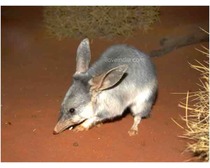If you are keen to know the facts about greater bilby, you have come at the right place. Read on to explore interesting and amazing information on greater bilby.
Facts About Greater Bilby
Greater bilby is the largest of the bandicoots, which is now counted amongst the endangered species of animals. Scientifically called Macrotis lagotis, the animal is predominantly found in the arid areas of Central Australia. They are also known as the ‘pinkie’ in South Australia and the ‘dalgyte’ in Western Australia. Due to the similarity of its features to that of a rabbit, greater bilby is often called the ‘Great Rabbit Bandicot’ as well. We bring you some more interesting facts and amazing information on this endangered species, in the lines below.

Facts About Greater Bilby
Kingdom: Animalia
Phylum: Chordata
Class: Mammalia
Infraclass: Marsupialia
Order: Peramelemorphia
Family: Thylacomyidae
Genus: Macrotis
Species: M.lagotis
Binomial Name: Macrotis lagotis
Body Length: 1-2 feet in length, tail: 8-12 inches
Weight: Male: 1-2.4 kg; Female: 0.8-1.1 kg
Life Span: 3-5 years
Diet: Omnivore
Habit: Nocturnal
Habitat: Semi-desert areas, grassland, woodland and savannah
Age of Sexual Maturity: 6 months
Call: Squeal
Gestation Period: roughly 2 weeks
Number of Offspring: 1-3
Interesting & Amazing Information About Greater Bilby
- The greater bilby has the habit of swallowing a large amount of soil with its food.
- It is an omnivorous animal and its main food comprises of insects, birds, mice and lizards. It consumes fruits and seeds to satisfy its need for water.
- The animal hunts its prey both above and below the ground.
- The greater bilby has strong forelimbs and thick claws, which make it an excellent digger. It digs a spiral chamber to a depth of around five feet and makes a sleeping chamber at the end of it.
- The animal lives in families, in the burrows. Usually, one adult stay in a burrow, along with the mother and babies. In some cases, it is a couple that stays in the burrow.
- Its tail bears black color from the start till the middle, while it has a white color from the middle till the end.
- The second and third toes of the back of the greater bilby are joined together. The fourth toe is of a very long size. The animal has slightly curved claws in its front feet.
- The pups of the animal remain in the pouch of their mother for two-and-a-half weeks, after which they learn to stay in the burrow.
- It stays in a place only temporarily. The duration of its stay is determined by the availability of food materials.
- The greater bilby has a powerful sense of smell and a sharp hearing capacity.
- It is a clean animal, which indulges in the grooming of its fur at regular intervals.
- The animal uses all the four legs to walk. The hind legs move together, whereas the forelimbs have their movements together.
- The greater bilby takes rest by squatting down on its hind legs and tucking its nose between the front legs. It consequently covers its eyes by using its ears.
- The main predators of the animal are cat, fox and dingo.
- Similar to a rabbit, it can stand on its hind feet and has its front paws tucked in order to scrutinize its surroundings.
- The greater bilby is known to live for eight years in captivity.


See also
More from iloveindia.com
- Home Remedies | Ayurveda | Vastu | Yoga | Feng Shui | Tattoos | Fitness | Garden | Nutrition | Parenting | Bikes | Cars | Baby Care | Indian Weddings | Festivals | Party ideas | Horoscope 2015 | Pets | Finance | Figures of Speech | Hotels in India : Delhi | Hyderabad | Chennai | Mumbai | Kolkata | Bangalore | Ahmedabad | Jaipur
- Contact Us Careers Disclaimer Privacy Policy Advertise With Us Lifestyle Sitemap Copyright iloveindia.com. All Rights Reserved.




